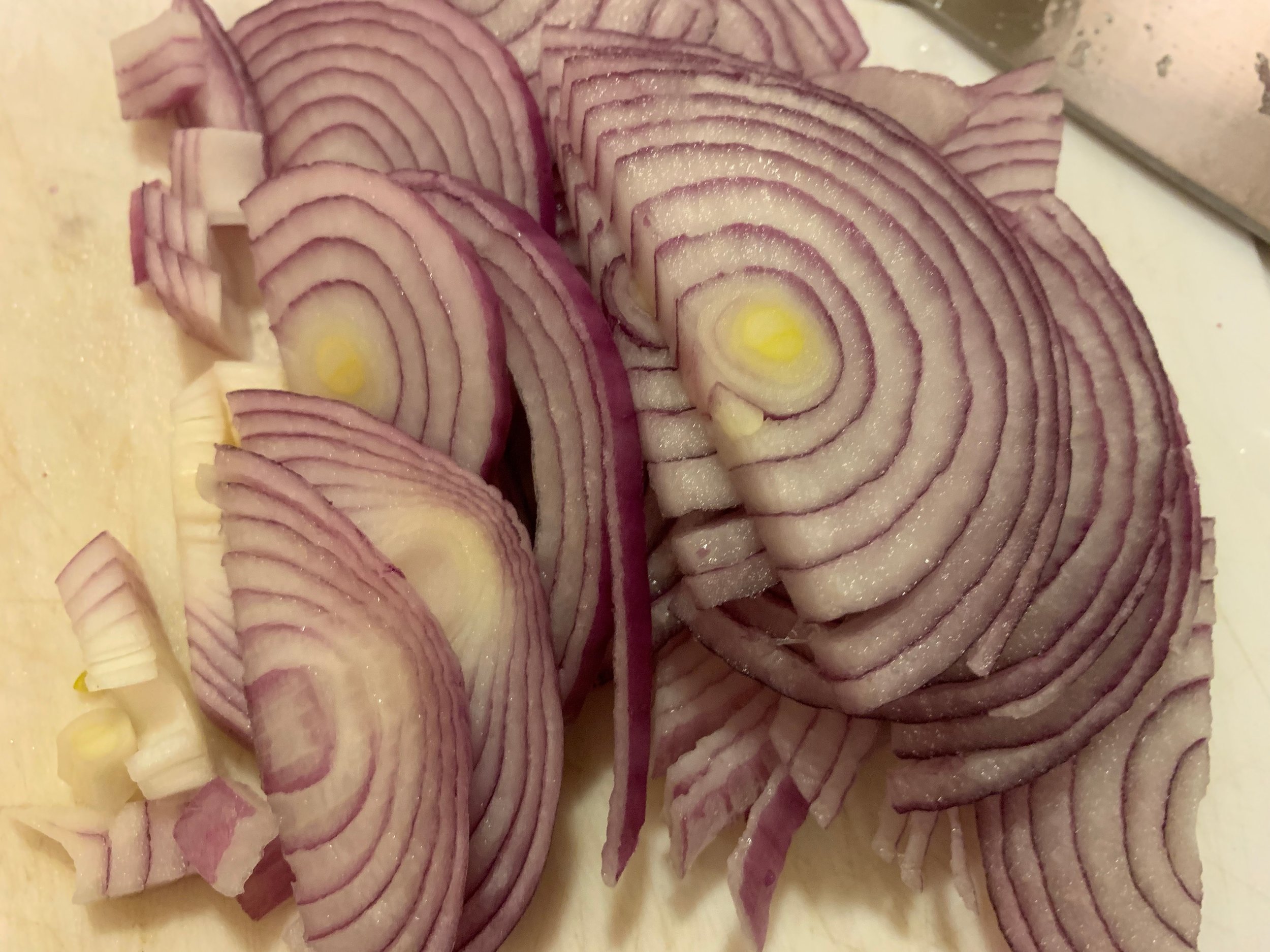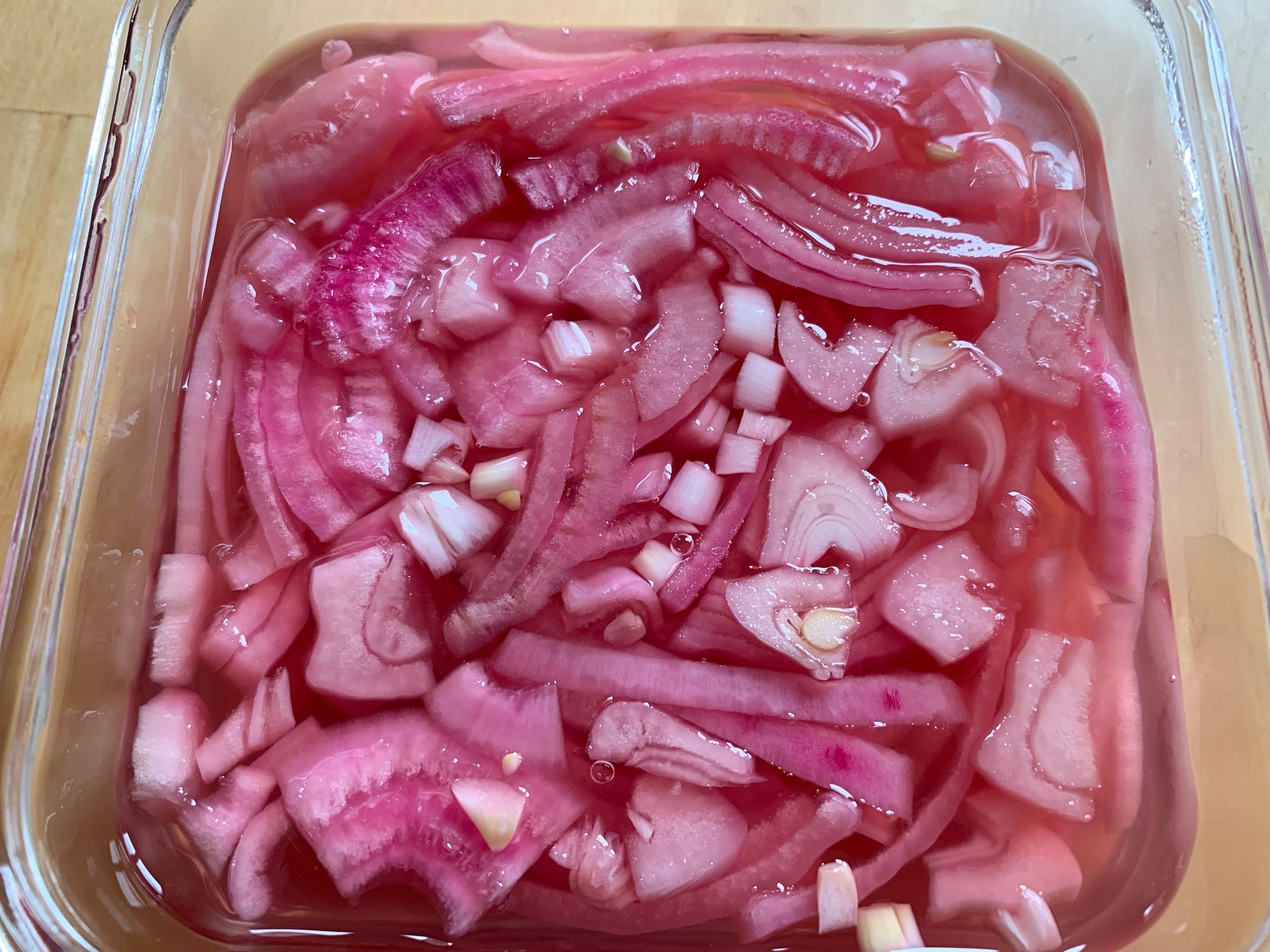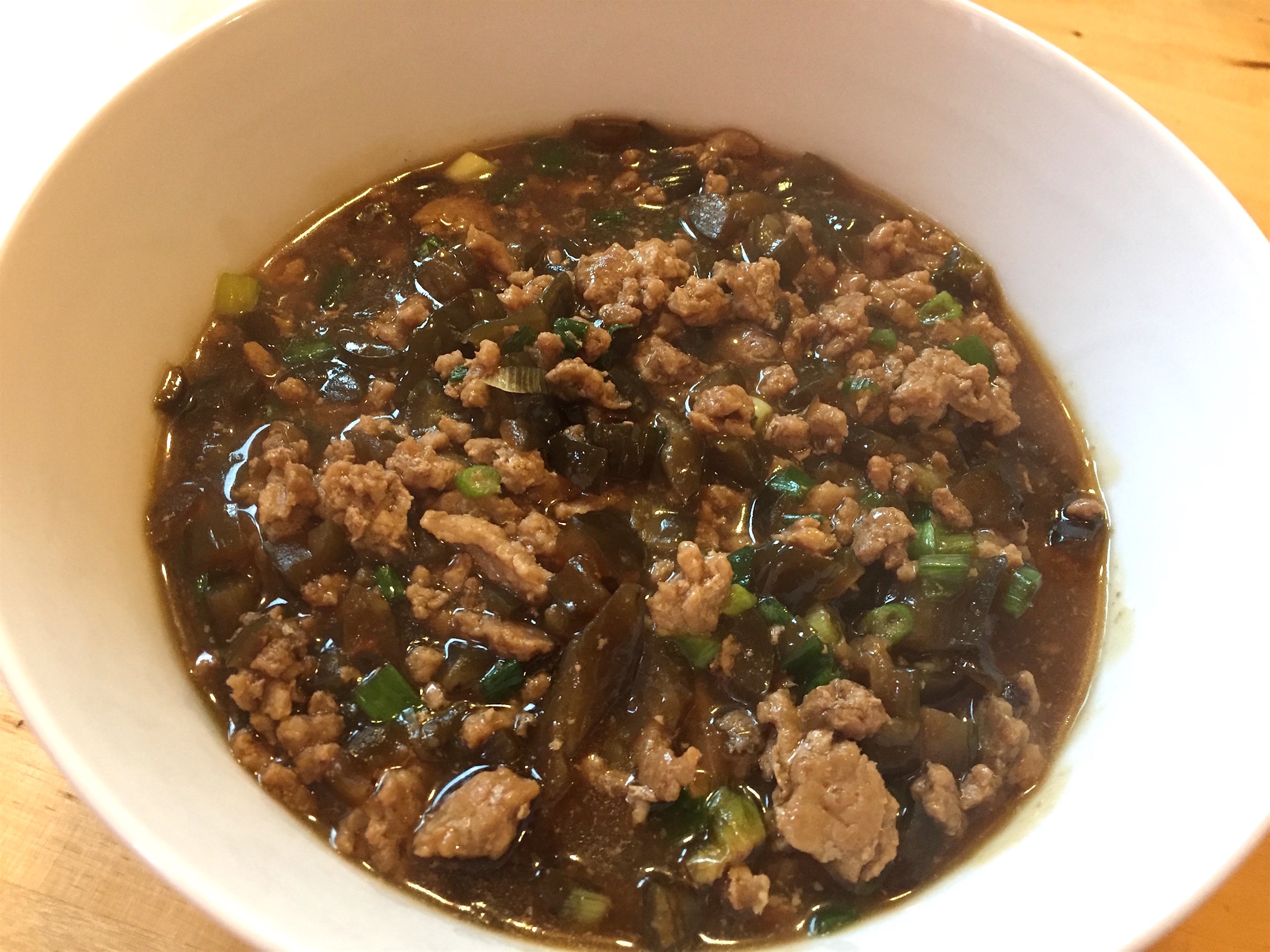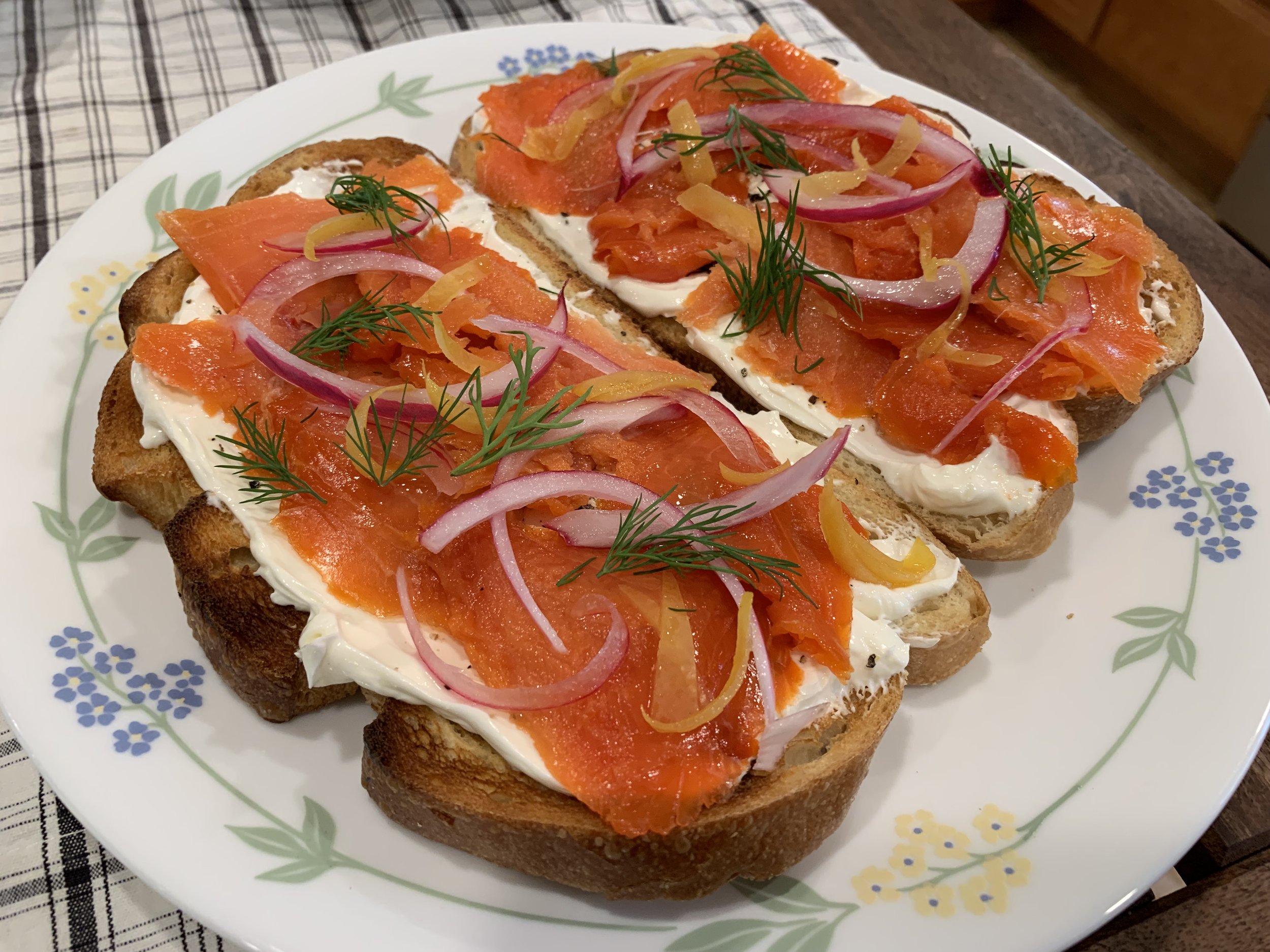Pickled Red Onions
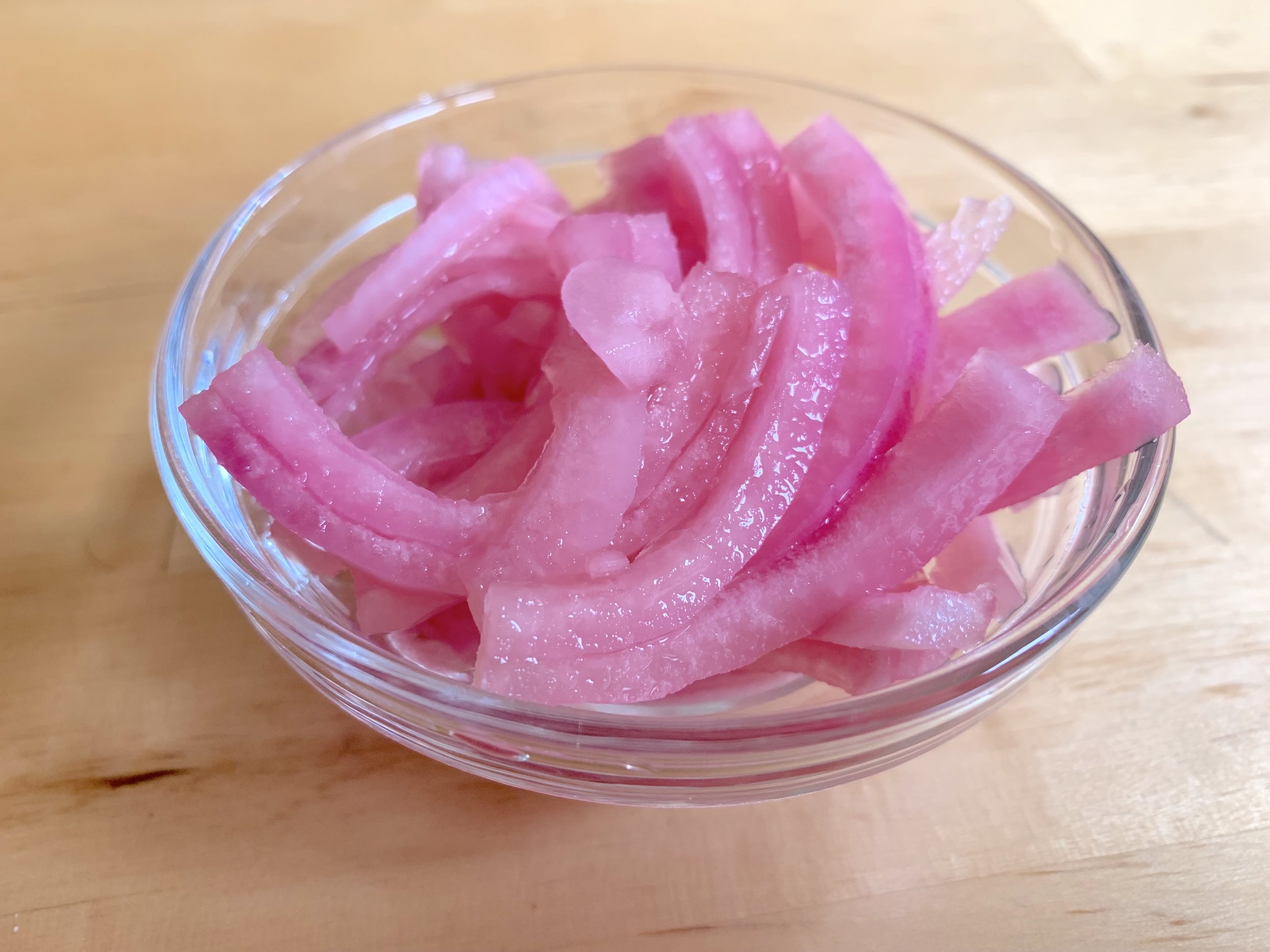
Pickled onions are an easy and versatile tool in the arsenal of the home chef. Their vibrant color, crisp texture, and powerfully sharp, acidic punch can enhance and enliven many dishes. Pickled onions have seen a recent surge in popularity on the American restaurant scene in the last decade, but their humble origins can be traced all the way back to the beginning of agriculture. Onions have been eaten by peoples around the world since the dawn of recorded history [1], and have been preserved through pickling in vinegar for nearly as long [2].
The wild ancestor to the modern domestic onion is now extinct, making it impossible to trace its exact origins. It is possible that domestication and/or culinary use of the onion occurred independently in several locations. The onion featured prominently in East Asian, South Asian, African, and European food prior to the establishment of long-range trade routes, and was also used by Native American peoples prior to the arrival of Europeans in the Western Hemisphere. Nearly every cuisine has its version of pickled onions—in Britain, pearl onions pickled in malt vinegar are served as an accompaniment to fish and chips; in India, onions pickled in spiced vinegar can be found with rotis and chappathis; in China, onions pickled with rice vinegar, soy, and ginger are served with dumplings; in Mexico, red onions pickled with bitter orange juice are a common topping for tacos—the list goes on and on. The preparation we are doing today is a basic version of pickled red onions, though the method can be modified to create many variations.
Ingredients
1 red onion, thinly sliced
½ cup red wine vinegar
1 tbsp brown sugar
1 tsp salt
We begin by making a simple pickling solution, built as all pickling solutions are on a combination of vinegar and salt. We will also be adding some sugar, which will help to bring out some of the natural sweetness of the onions. Combine the vinegar, salt, sugar, and half a cup of water, and stir vigorously until the salt and sugar are dissolved.
Thinly slice the onion, and submerge them in the pickling solution. If there is insufficient pickling solution to cover the onion pieces, mix more at the same ratio.
What’s going on as the onions pickle? This recipe is quick vinegar pickle, so no fermentation occurs. Both salt and the acid of the vinegar begin to break down the cell walls of the onion, releasing many of the volatile compounds and allowing the onion to soak up the flavors of the surrounding liquid. This results in a milder and slightly softer final product, when compared to raw onions. The breakdown of these cells also releases an anthocyanidin, the natural pigment in the outer layers of the red onion. [3] This pigment is stable at low pH, and is taken up by the other onion cells, resulting in the distinctive vibrant pink color of pickled red onions.
If you’re in a rush, keep the onions in the solution for 1 hour at room temperature. However, if you have the time, it is best to refrigerate the onions overnight in the refrigerator. Use a glass container to store the pickles, as the highly acidic solution can react with metal or plastic. You can keep the pickles in the refrigerator for up to two weeks in the vinegar solution. Keep in mind that the flavor of the pickled onions will become more sour over 2 or 3 days as the cells take up more solution, after which the system reaches an equilibrium and the flavor will no longer change. Drain the onions before serving. The pickling solution can be reused several times, with new onions.
Pickled onions are a versatile addition to many dishes. Use them as a side for a larger main, in salads and sandwiches, as a topping for burgers, hot dogs, and tacos, or with cheese and cold cuts.
Substitutions
You can pickle any sort of onion, though only red onions will lend a distinctive pink color to the final product. Sweet onions make great pickles, with a more subtle flavor than pickled red onions. If you like a sweeter pickle, consider increasing the amount of sugar up to 2 tablespoons.
Any mild, sweet vinegar works well with onions, such as white wine vinegar, apple cider vinegar, malt vinegar, rice wine vinegar. You can also use distilled white vinegar if you want a blank canvas for other flavors, or use a combination of vinegar and acidic fruit juices.
If you want to add flavors to the pickling solutions, the options are nearly endless. Aromatics like garlic, fresh herbs such as bay, dill, or rosemary, and whole and ground spices such as peppercorns, cumin, and fennel all work well. Experiment in small batches, and find one you like! Some of my favorite combinations:
1) Malt vinegar, fennel, cilantro, fresh chili
2) Rice wine vinegar, soy sauce, ginger
3) Juice of a grapefruit and a lime + ¼ cup white vinegar, garlic, cumin, oregano
4) White wine vinegar, garlic, allspice berries, black peppercorns, dill
[1] Evidence found in China, Egypt, and elsewhere point to human consumption of onions going back to at least 5000 BCE. Egyptians viewed the onion, with its many layers and concentric rings, as a symbol of immortality, and would often use them in burial ceremonies.
[2] Archeological evidence for pickling has been found as early as 2400 BCE, both in Mesopotamia and Mohenjo-daro, in the Indus Valley.
[3] The specific pigment found in red onions is cyanidin-3,4′-di-O-β-glucopyranoside.
Recipe
Prep Time: 5 min Cook Time: 0 min Total Time: 1 hr 5 min
(+1 hr inactive)
Difficulty: 1/5
Heat Sources: None
Servings: 12
Ingredients
1 red onion, thinly sliced
½ cup red wine vinegar
1 tbsp brown sugar
1 tsp salt
Instructions
1. In a container, mix together the vinegar, ½ a cup of water, salt, and sugar, until the salt and sugar are dissolved.
2. Thinly slice the onions and place them in a glass container. Pour over the pickling solution and let sit at room temperature for 1 hour, or in the refrigerator for up to 2 weeks.
3. Drain onions and serve.



